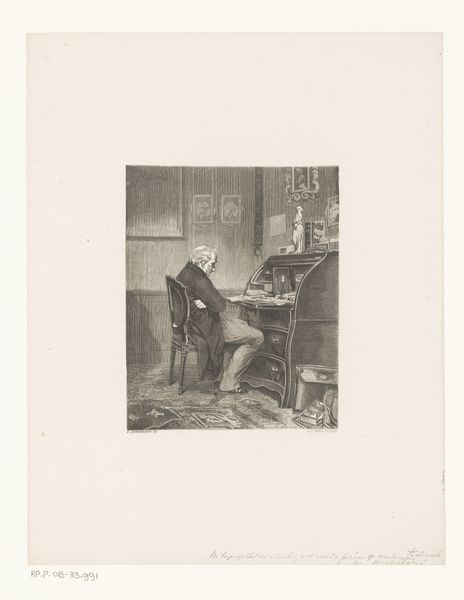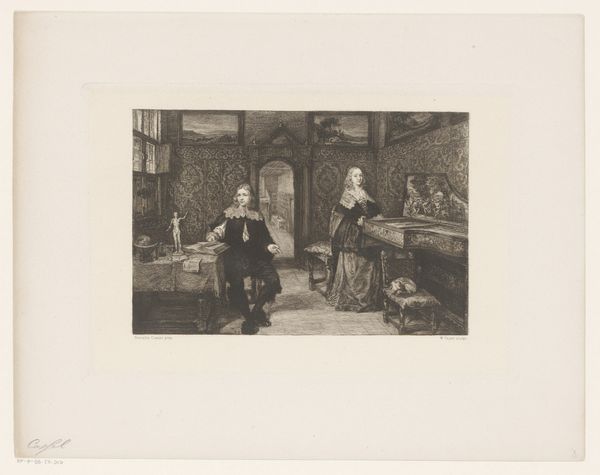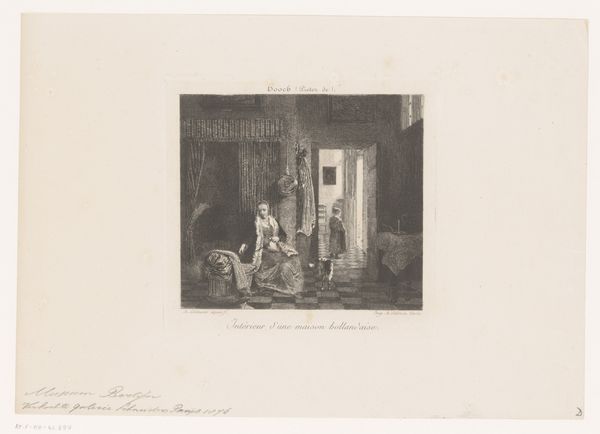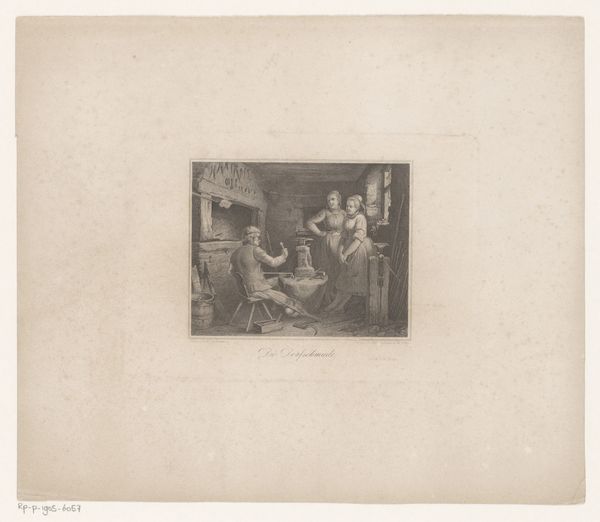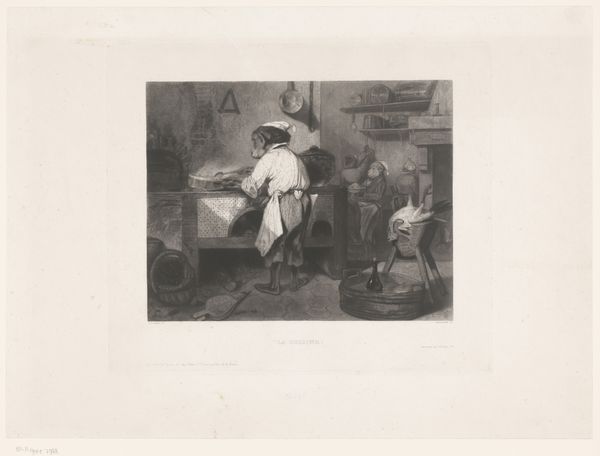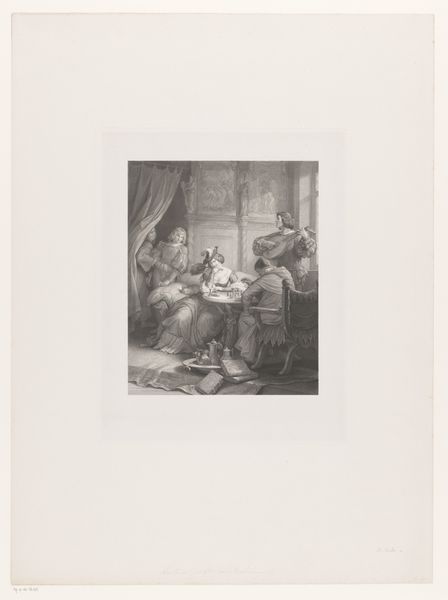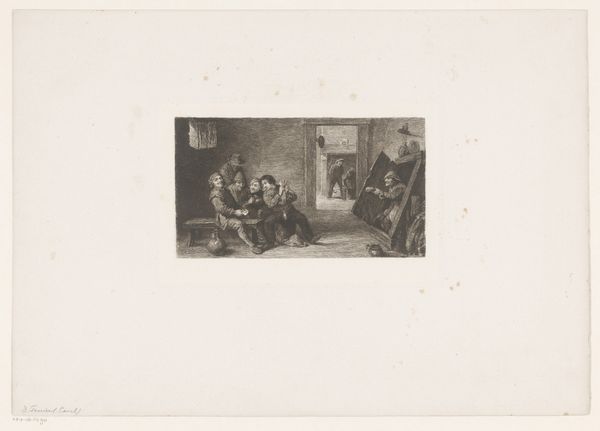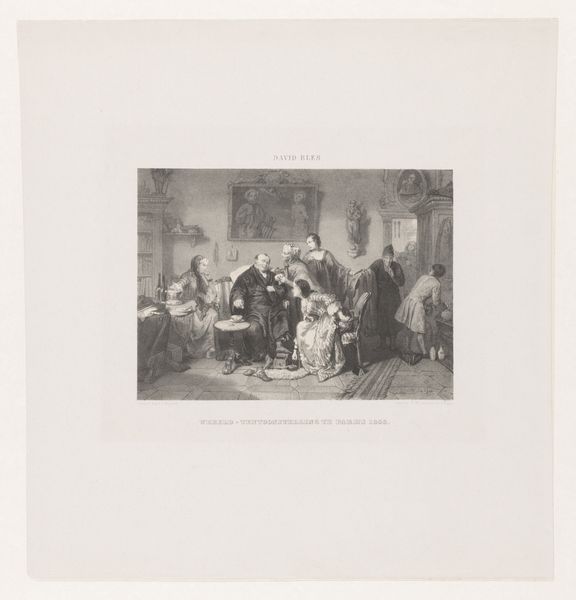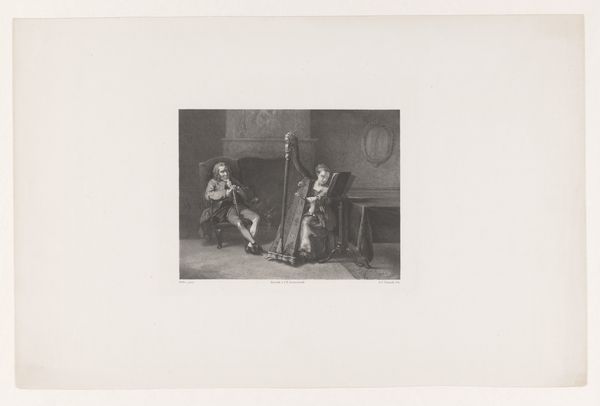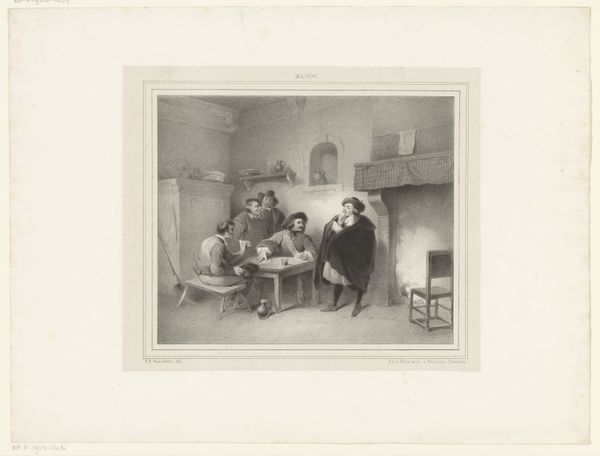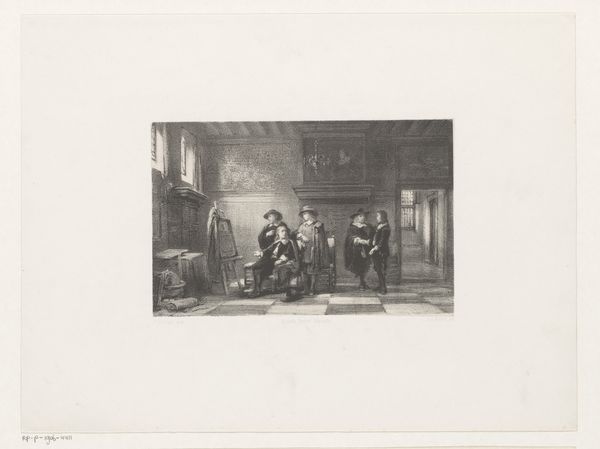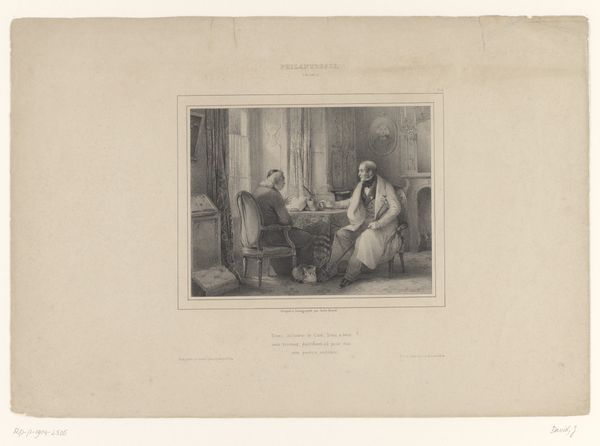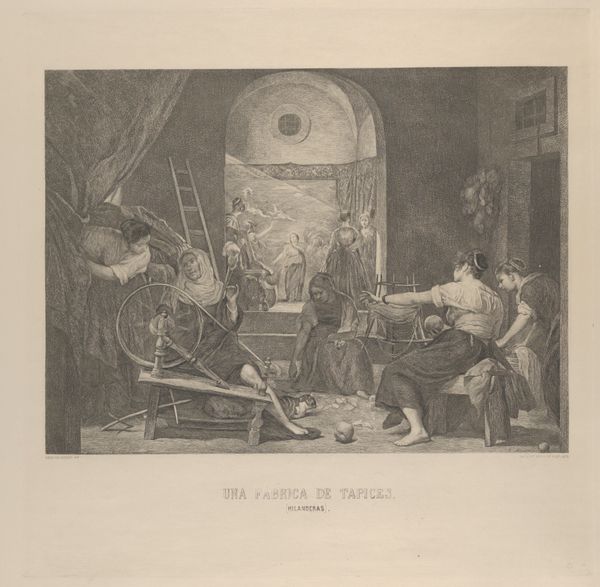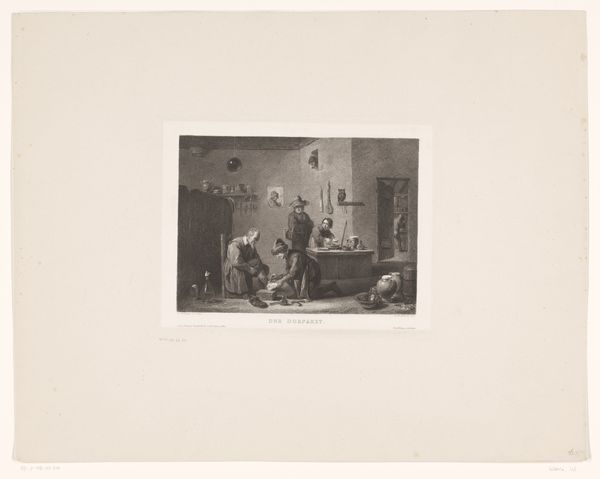
Dimensions: height 426 mm, width 550 mm
Copyright: Rijks Museum: Open Domain
Curator: Here we have Frederik Hendrik Weissenbruch's "Two Women at the Piano," a print from 1855, currently residing here at the Rijksmuseum. Editor: It's instantly evocative of a quiet domestic scene. The textures, rendered with such precision in this print, hint at silk gowns, polished wood, and the cool touch of the piano keys. Curator: The texture derives from the medium of engraving, allowing fine lines to define not just form but light and shadow. One might think about the labour required to produce this print. What sort of audience consumed these images? How did their reception shape notions of leisure and domesticity? Editor: Precisely. Notice the detail of the sheet music—an open book, implying shared musicality and culture, instantly creating an allegory for harmonious living, reflecting the romantic ideals of the time. But it extends beyond harmony into status and virtue; these symbols would have certainly been clear to contemporary audiences. Curator: Indeed. It offers a look into the world of consumption in middle class nineteenth century Netherlands, and how materials of home decoration—piano, clothing, even the paper this engraving is on—contributed to a developing notion of comfortable homelife. The very making of this work and the materials required contributed to its meaning, so the image is not only in what is presented, but is extended to what composes its being. Editor: I agree. The visual vocabulary speaks volumes about the era's aspirations for ideal womanhood and comfortable bourgeois life. And consider the larger tradition that this domestic scene fits within – artists like Chardin in France and Vermeer in Holland often turned to similar spaces for similar symbolism of quiet contentment and domestic worthiness. This cultural memory enriches Weissenbruch's engraving. Curator: Looking closely at the layers involved in its production invites deeper engagement with how cultural values become so deeply enmeshed in the very fabric of our existence. This examination of process emphasizes production rather than purely iconic imagery. Editor: It is fascinating how process intersects so completely with content, which also enables further iconographic analysis. It prompts one to consider both the work's construction and its evocative and symbolic weight. Curator: Indeed! A rich exploration of both worlds.
Comments
No comments
Be the first to comment and join the conversation on the ultimate creative platform.
